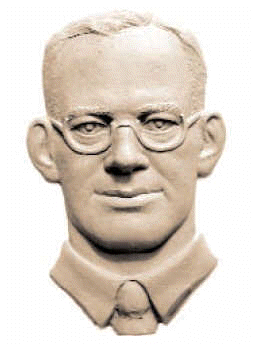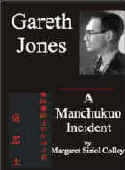Gareth Jones
[bas relief by Oleh Lesiuk]
HOME |
Stop Press |
Complete Soviet Articles & Background Information |
Précis of Gareth's
|
All Published Articles |
BOOKS
|
|
|
|
More Than Grain of Truth(2005) |
|
|
TOPICAL
'Are you Listening NYT?' U.N. Speech - Nov 2009 |
Gareth Recognised at Cambridge - Nov 2009 |
Reporter and the Genocide - Rome, March 2009 |
Order of Freedom Award -Nov 2008 |
Premiere of 'The Living' Documentary Kyiv - Nov 2008 |
Gareth Jones 'Famine' Diaries - Chicago 2008 |
Aberystwyth Memorial Plaque 2006 |
GENERAL
Scholarship Fund |
Site Map |
Links |
Legal Notices |
Sponsored Links |
Contact |
|
After Gareth’s death, The Western Mail paid tribute to him by re-publishing a selection of his articles from their newspaper and the proceeds from the publication of this book, In Search of News,5 went towards a travel scholarship which was founded in his memory. The title page bears a quotation from the eminent journalist, John Garvin, the editor of The Observer, describing Gareth as a journalist who had won every step of his way by personal force. That force is precisely what the book reveals; it is a newspaper’s testimony to the achievements of one of its brightest stars and a recollection of the kind of brilliant informative writing he had contributed over the years. The little book - published over half a century ago, but still quoted as a record of Welsh life in the 30s and of Welsh awareness beyond Wales - is a wonderful example of Gareth’s powers of description and evocation. His articles describing Wales excite the imagination, setting the scene with the sounds and sights of the countryside. He describes local characters whose trades have long since fallen into obscurity and recalls such characters of folklore and legend, telling the story of Bob, the Raven of Brechfa, or the legend of the Lady of the Lake, the Mystic Maid of Llyn y Fan Fach. One only needs to read that lovely recollection of an evening in a Welsh farmhouse to see his passionate love and appreciation of his Welsh heritage. Turning to the pieces in the Eisteddfod is to see him feeling that love for historical investigation and observation of the continuing influence of that tradition. Even the articles on his foreign topics - Lenin’s widow and the Seven Japanese Virtues reveal a journalist who was essentially a Welshman abroad. It was Gareth’s ambition to Search for News that eventually led him to explore further afield. Although he had already travelled extensively in Europe and the United States, the Far East remained unknown territory to him, and, wishing to investigate its growing political problems, it was to this turbulent region that he was next to turn his attention. Over several months, his work took him throughout Asia, before bringing him, on July 4th, 1935, to Peking (Beijing). It was from here, a week later, that he was to embark on a journey into Inner Mongolia, a journey which would prove, tragically, to be his last. |
Gareth with his Mother |
|
|
|




